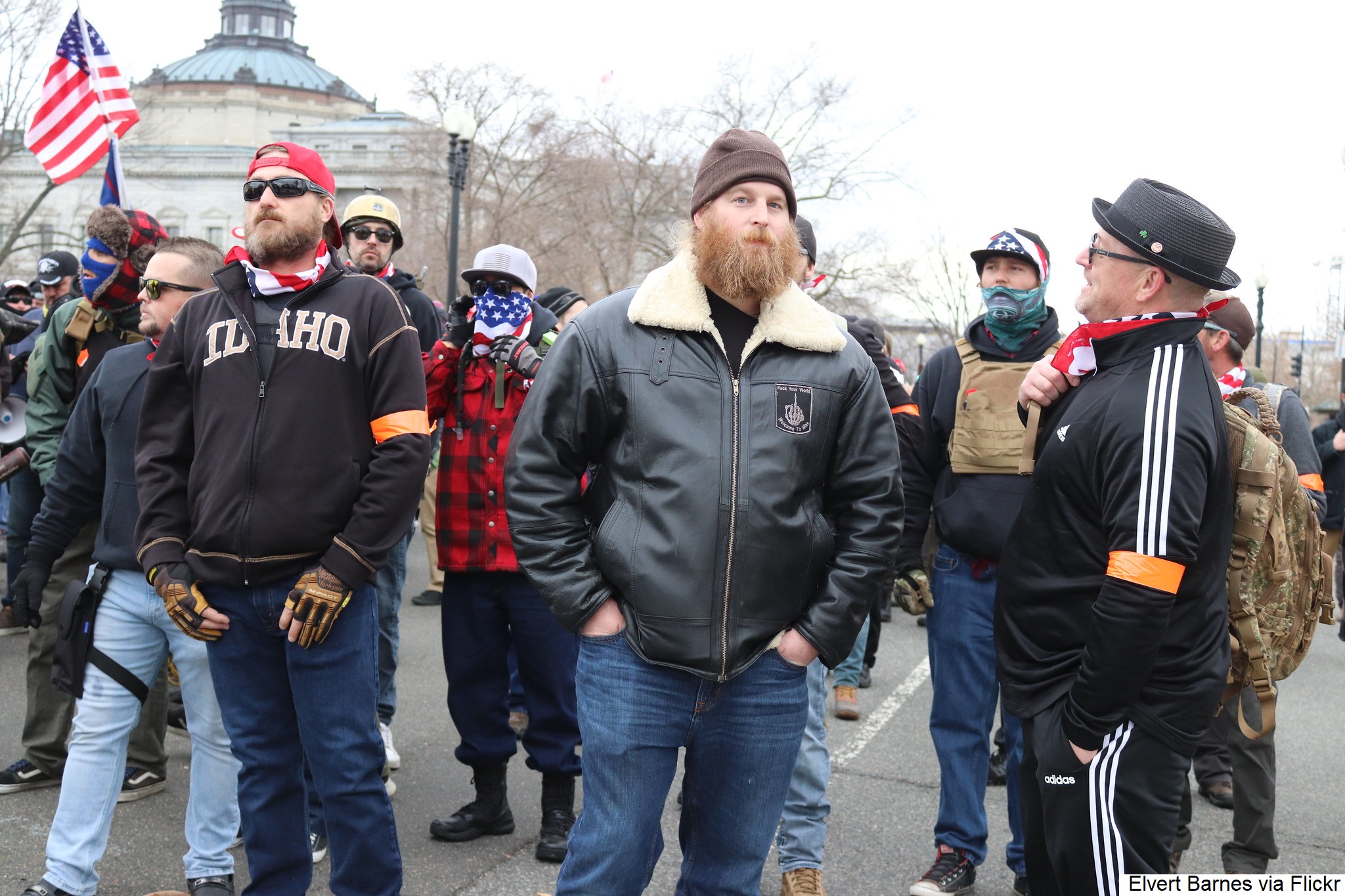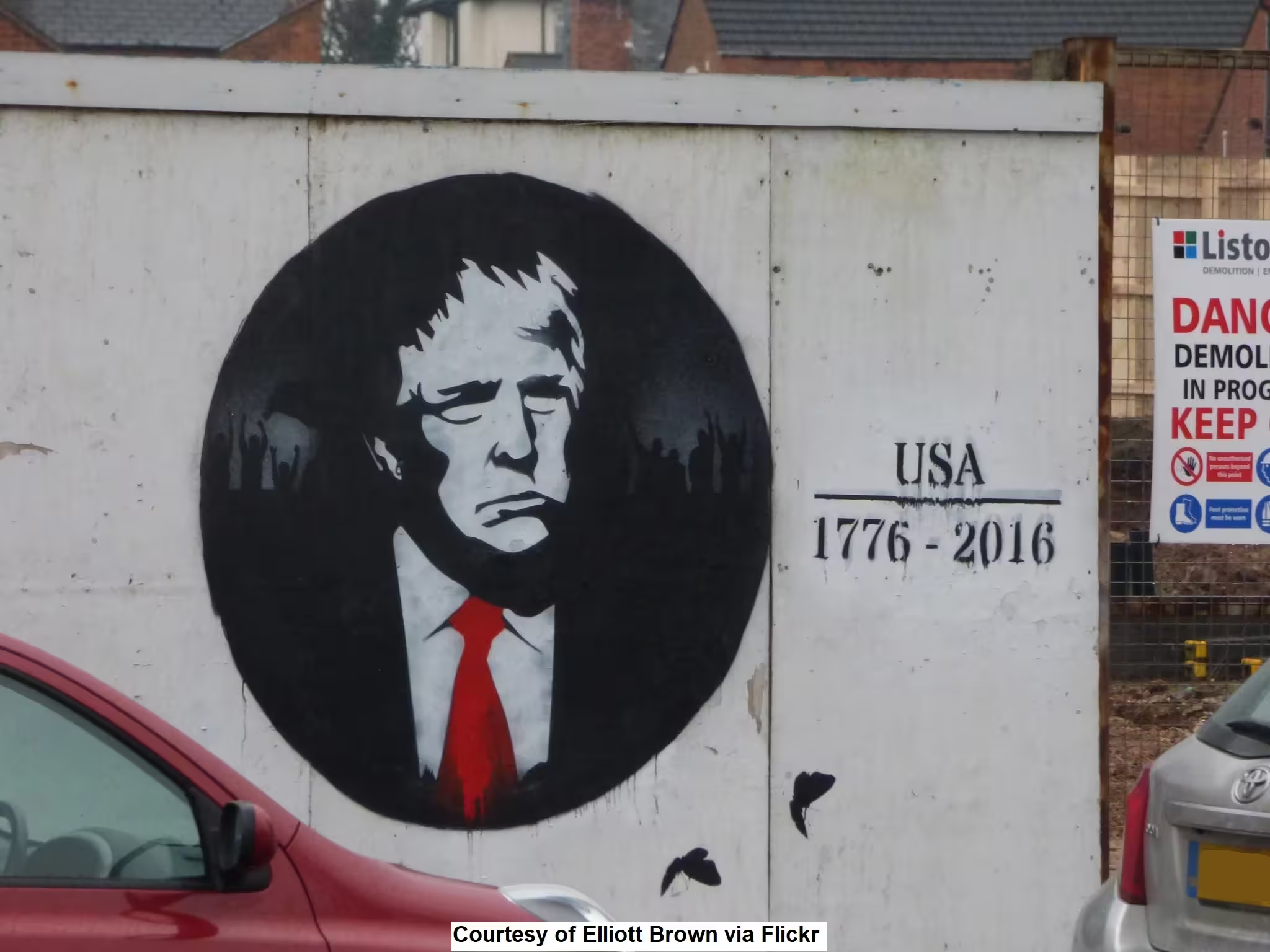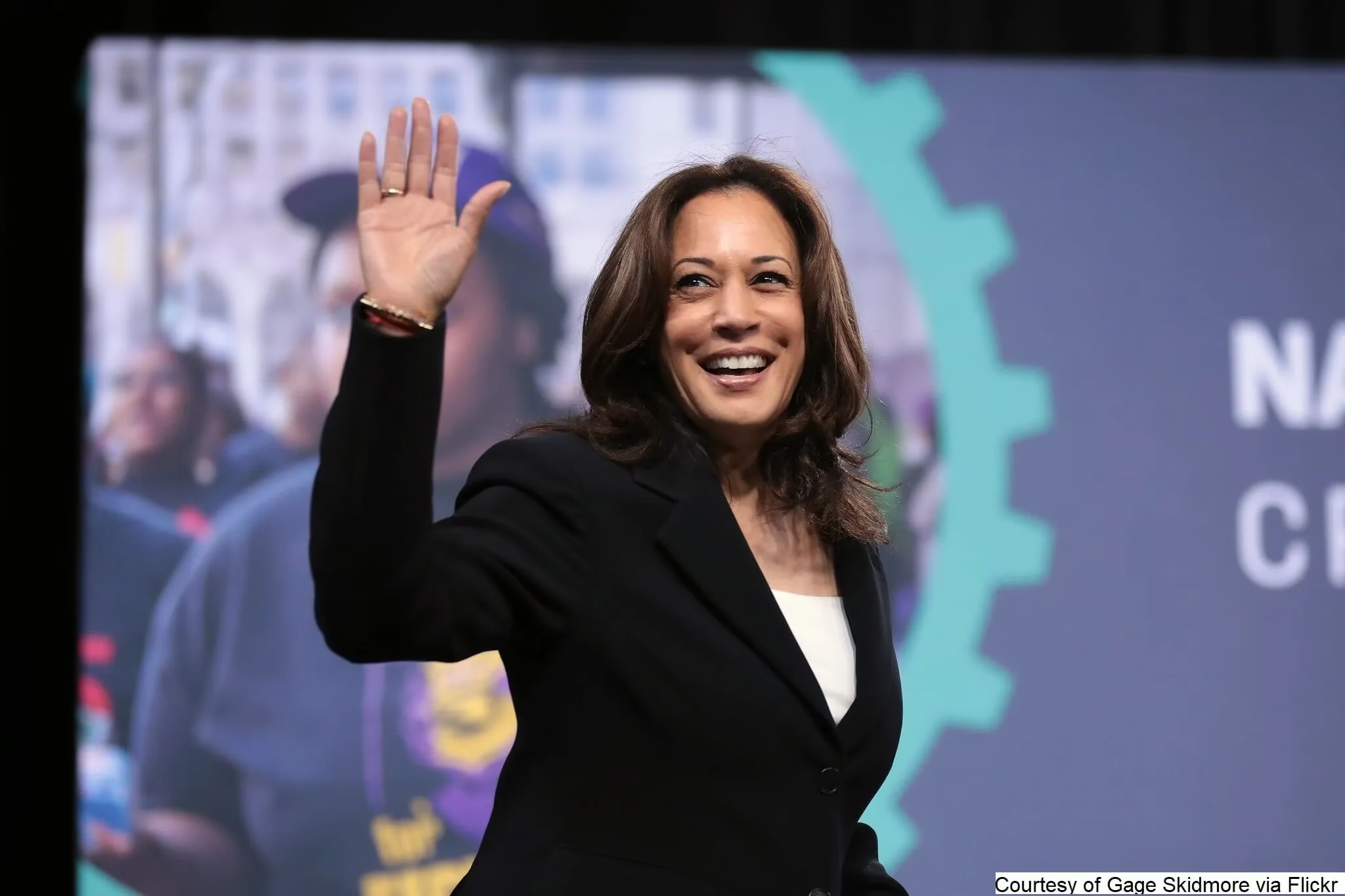Disclaimer: This post covers sensitive topics, which may be distressing to some readers.
In March of 2016, I attended a Trump rally in Tucson, Arizona. It almost cost me my life.
I was conflicted. I’m a Democrat through and through, but I wasn’t happy with the way Hillary Clinton handled the gay rights movement. She waited until the last moment–literally days after the polls showed majority support–to come out in favor of gay marriage.
It felt fake. If she was timing her positions with the polls, then how could I possibly know anything about her and what she stood for? I still don’t trust her.
At that time, Trump was making waves, taunting his opponents like a bully at recess, commanding massive crowds at his rallies. He had real support behind him, and while it was apparent that he had been playing to the lowest common denominator, I had to admit, he was doing something right.
Doubt started to creep in. Maybe he was an evil genius who knew how to win the hearts of the masses. Maybe he was a secret centrist who decided it would be easier to get elected as a Republican. He certainly wasn’t a traditional conservative. His views didn’t match, and neither did his life story. There was a high-profile divorce, mistresses, and a long record of donations to Democratic campaigns.
He seemed to love taking on the Republican establishment, using nicknames like Lyin’ Ted and Little Marco. He had Jeb Bush so furious during the debates, the guy looked like he wanted to knock over his podium and pummel Trump to the ground. It was spectacular.
Like most people, I was fully incapable of trusting the mainstream media. They clearly had it out for him. They’d spend hours arguing with Trump’s campaign manager, Kellyanne Conway, making outlandish claims. His behavior was so disgusting and so unbelievable, everything they reported sounded like a lie.
When they talked about the violence at Trump’s rallies, I dismissed them. I thought they were focusing on isolated incidents, not a general trend. And yes, I saw Trump egging the crowd on and offering to pay assailants’ legal fees, but this was 2016; there was still a level of decorum in American politics. Nobody at the time could’ve possibly imagined the depths to which he’d descend. It just didn’t seem possible.

The Day of the Rally
I attended a Bernie Sanders rally in October 2015, and Trump’s event was supposed to be held at the same location–the Tucson Convention Center downtown. I thought I knew what to expect.
The Sanders crowd was quiet and light-hearted, lounging on folding chairs, sharing sodas and snacks while they waited their turn. There was no aggression, no protesters. They were excited to see their favorite candidate and share in his values; they weren’t about to fight.
The Trump rally was another type of carnival. To understand what it was like, you have to take a long hard look at white, rural Arizona. All throughout the state, there are bleak desert outposts, most no bigger than villages; their inhabitants survive off gas stations and tiny grocery stores–maybe a Walmart if they’re lucky. The modern amenities we take for granted, including cell phones, TV, and internet–heck, sometimes even running water and plumbing–are far from a given in their world.
It’s a foreign culture rooted in every form of prejudice imaginable. Their lives are church and cheap beer. Polygamy, superstition, and faith healing are all common–and just when you think you’ve got a handle on their extremism, they’ll come out and surprise you.
Had it been 20 years earlier, the crowd would’ve been wearing cowboy hats and Peggy Hill glasses. But those conservatives are dead and gone, replaced by bedazzled American flag jumpsuits, stained graphic tees, fatigues, and cheap denim.
I noticed the mood immediately–like soldiers ready to storm the battlefield, or a group of monster truck fans waiting to see something get smashed.
There were clothing stands with vulgar t-shirts, MAGA hats, and foam fingers. A group of hobos walked up and down the line, spreading the stench of rotten sweat and rolled cigarettes. I met eyes with one, a greasy-haired Uncle Sam, and he gave me a knowing smile. Part of me thought that maybe, even in that haze of chemicals, he knew something I was too naive to recognize.
When I got to the front of the line, I was met by a group of stern-faced guards. They were barking orders, telling everyone to take out their belongings and place them in plastic bins as they shoved the crowd through metal detectors and X-ray machines.
They had the aggressive stance of shell-shocked law enforcement without the uniforms. I remembered hearing that Trump had been assigned a Secret Service detail, so I passed them off as feds, but something was off. They were rough around the edges.
Just past the entrance, there was a group of Trump supporters screaming at an African American man, telling him to go back to Hillary. Another Clinton supporter walked past holding a makeshift sign. He was clearly heated.
Rows of seats stretched out in front of me, descending to the ground floor. To my left and right were concession stands selling refreshments–a welcome addition to what I suspected would be an interesting afternoon. I grabbed a hot dog and a campaign sign and found a spot at the far end furthest from the stage.
Sanders allowed the media to set up wherever they wanted. They’d roam the crowd with cameras, asking for interviews and taking pictures. Trump did things differently. He’d cordoned them off to a small corner near where I was sitting, effectively blocking off their view of the crowd. I had seen reports that this was happening a few days earlier. I also heard that certain outlets deemed ‘fake news’ were barred from attending.
Anyone who’s been to a campaign rally is familiar with the patriotic hold music they play during the interludes–corny tracks like ‘Born in the USA’ and ‘Proud to be an American,’ all pre-approved by the artists. This went on in a loop for well over 45 minutes, until a voice on the intercom cut through the air.
I will admit, I don’t remember the exact words the announcer used, but it chilled me to the bone. He welcomed the crowd to the rally, announcing that they were there to celebrate Trump. But there were some people spread throughout the stadium who wanted to interrupt their fun–violent protestors who had to be ejected. It had to be done peacefully. Supporters were not to attack them. They didn’t want to make the MAGA movement look aggressive. So instead of taking matters into their own hands, they were instructed to raise their campaign signs and shout, “Trump! Trump! Trump!” That way, a guard could come down and remove them.
I was furious. It was like telling an angry rattlesnake to calm down. They didn’t want peace. The entire stadium erupted, just as they knew it would, and I nearly jumped out of my seat. Everywhere I looked, signs were raised, and people were shouting. It was a political mosh pit, and I knew–I just knew that I was in danger. People were already starting to look at me.
I noticed a pattern. A heckler would stand up, shout something, and a supporter would lunge at them. The guards were under orders to watch and wait, allegedly to keep from getting caught in the crossfire. But the real goal was to make sure the protesters got hurt. Once the fight was over, they would get dragged out, either on a stretcher, in handcuffs, or both.
The brawls seemed to be moving clockwise. The seats in the stadium were divided into sections by staircases. One section would erupt; a protestor would leave, and then the next section would start chanting. There was only one heckler at a time. It was obviously planned out beforehand. I later came to believe that the Trump campaign planted them there to cause a stir.
The stadium floor was relatively quiet. A man in a mobility scooter wheeled around in a circle with an American flag streaming behind him. Pre-teen ribbon dancers in Japanese schoolgirl uniforms ran back and forth slashing at the air. There were several men off to the side, each wearing tight black shirts, matching black caps, and Walmart jeans. What caught my eye was the pocket knives attached to their belts. How did they get those past the guards?
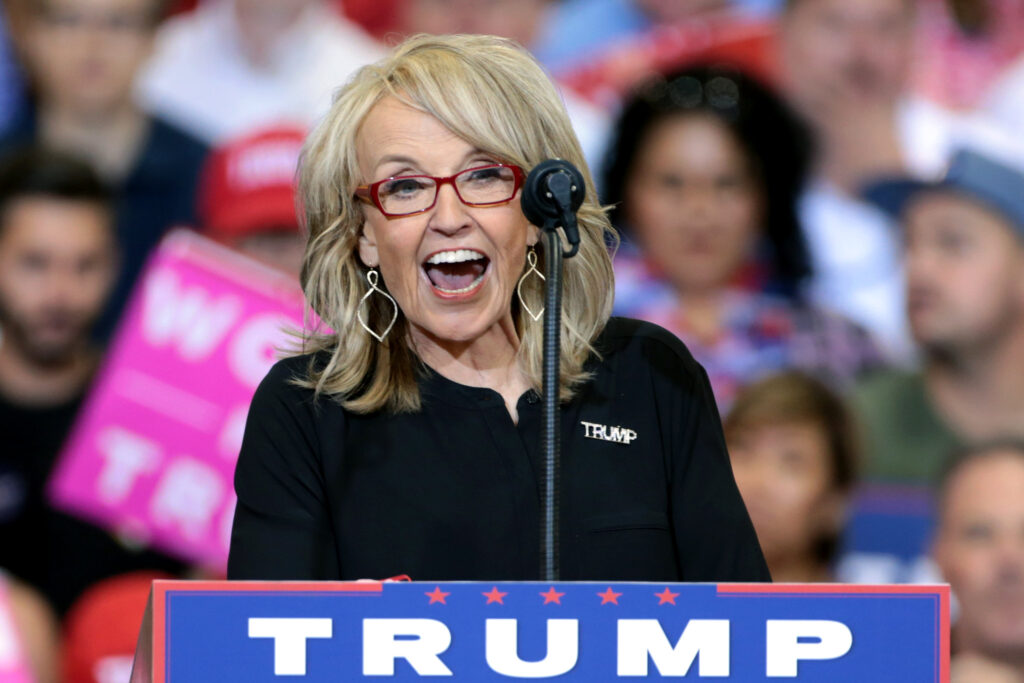
The music steadily transitioned to a dramatic crescendo, amping the crowd up, until it suddenly stopped, and a familiar face took the stage. It was former Governor Jan Brewer. She was the queen of gerrymandering, a tactic used to redraw the district maps across the state, ensuring that candidates in her party had enough votes to win the election. She didn’t just dilute votes. The woman fought tooth and nail for the right to do so–even going so far as to take her crusade to the state’s supreme court.
Her speech was semi-coherent. She had nothing prepared, and she was incapable of forming a complete sentence. After a few moments, she finally gave up and announced that they were going to build a wall. The crowd went wild.
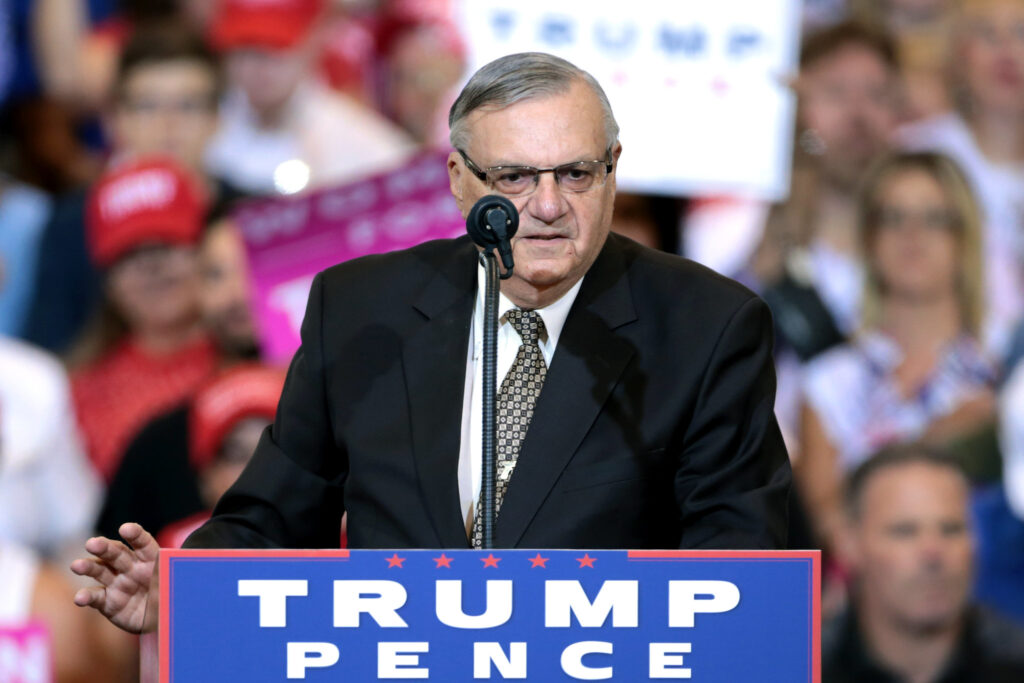
Next up to speak was Sheriff Joe Arpaio of Maricopa County, the seat of Arizona’s capital, Phoenix. Thanks to him, every Tucsonan knew that if they were in his jurisdiction and they got pulled over, they were not safe.
I first heard about him during his second election bid in ’96. I was in fourth grade. At the time, the entire country was in the grips of a failed tough-on-crime campaign, and Arizona was the center of it all. Teachers were forcing 9-year-olds to sit through assemblies about how we deserved to be tried as adults, and that we’d be rightfully labeled as violent criminals just for flicking someone.
Meanwhile, Arpaio was clearing out the county jail and replacing it with what came to be known as Tent City. Temperatures in Phoenix could reach as high as 120 degrees–dangerous enough that heat stroke was inevitable; prisoners were dying left and right, and it wasn’t just because of the weather. Arpaio had earned a reputation for being a sadist. There was a constant stream of disappearances, police misconduct, and scandals. He had his men commit unspeakable acts of carnage and bloodlust so shocking I could hardly think about them much less record them. It went lightyears beyond the Black Lives Matter horror stories we’ve all heard. They got creative with their atrocities, and it was all part of an effort to terrorize the public into submission.
At the time of the rally, Arpaio was facing federal charges for contempt of court. He had ordered his thugs to arrest everyone they suspected of being an illegal immigrant–essentially detaining any Latino that couldn’t prove their citizenship on command, and once again, people were disappearing.
I had read Arpaio’s quotes, and I was familiar with his style. I knew who and what he was, but I had never seen him in person. To be in his presence is to be in the presence of sheer malice. He had a dark, sickening tone of voice that reminded me of something black and rancid. I could feel it coming off of him. It gave me chills.
He informed us that there were two rallies. The cameramen in the corner, who were still setting up, wouldn’t be allowed to record his first speech; they’d be ejected if they tried, which meant he could speak freely. He said a group of anti-Trump protestors had blocked the highway, and he had instructed his men to severely injure a handful of them to send a message.
He also told us that he brought his sheriffs in from Phoenix against Tucson’s wishes, and he was going to send them out to quell the protests outside the convention center. Just like before, they planned on making sure a few were sent to the hospital. He said they deserved it because they were jobless degenerates. Much to my disgust, the audience started cheering.
The guards outside weren’t Secret Service; they were Arpaio’s army, and the rally wasn’t meant to be a celebration of their chosen candidate. Trump was moving from one city to the next, inspiring violent behavior in his base.
After he finished, they cycled through speakers and periods of hold music–leaving me anxious and concerned–until finally it was time to introduce Donald Trump.
When Trump stepped onstage, the entire stadium came alive. People were shouting, chanting, and making as much noise as they could. It was the perfect time for the men in black caps to make their move.
They grabbed a Latino on the stadium floor and shoved him to the ground. He fought hard. He knew his life was in danger, but it was useless. He couldn’t stop them.
They started stomping while guards watched, arms folded. Medics came up waiting with a stretcher. I knew they were going to kill him, and I think they did. I wanted to scream, cry out–do something, but I was just as helpless as he was, and this was sanctioned. Nobody was on his side. That’s how they got those pocket knives into the stadium. Arpaio’s men let them through.
I looked up at Trump. He saw. He was less than two hundred feet away, surveying the crowd like a priest smiling down at his flock. It was obvious from the look on his face that he couldn’t have been more satisfied with himself.
He was semi-coherent, just like Brewer. He couldn’t form a sentence unless it was scripted, which meant that he wasn’t qualified to become president. But Republicans aren’t exactly the most diligent researchers. They tie their political beliefs in with their religion. To question conservatism was to question their faith in God.
Now Trump was their messiah, and if the size of that crowd was any indication, he was going to win. But he’d face constant scrutiny as president, and it would cause him to lose support. That’s why he was encouraging violence. He’d need an army to storm the capitol and cement his power in 2020. I knew it in my bones.
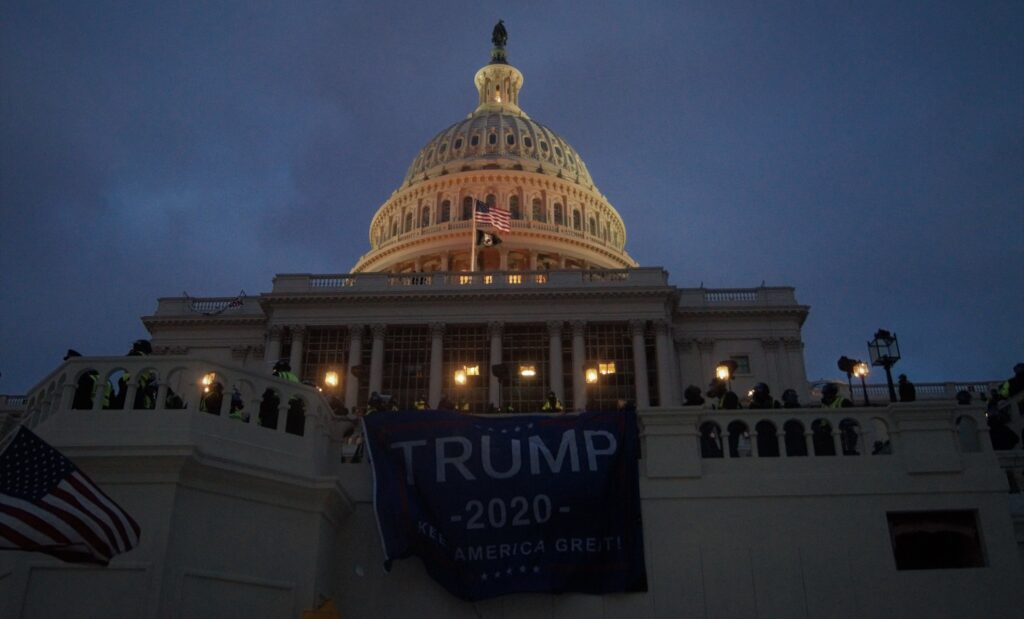
Escaping Trump’s Tucson Rally
It was time to leave. I took the steps to the top floor two at a time, certain that someone would jump out and grab me. Maybe they’d notice my hips swinging a little too much or the way I held my wrist. People know I’m gay before I even open my mouth, which meant that I was a visible enemy in a crowd of people with a taste for blood.
When I got to the top, it seemed like smooth sailing. I didn’t foresee any issues. People were leaving in large groups. Nobody was being held back by security. I’d just walk out, and the entire nightmare would be over.
Before I could reach the exit, a guard stepped up to block my way. “You can’t leave.”
“They’re leaving,” I said, motioning to a mother and young child who walked out the door.
“They can leave. You can’t.”
I tried everything. I told him he couldn’t hold me there. I said it was illegal. I told him I left my insulin in my car–a trick that had worked for me in the past. He didn’t buy it. Finally, I looked him in the eye and said, “It’s a bloodbath. I am leaving.”
“Fine,” he said. “Go back that way. That’s where the exit is.” He wanted me to walk down an inner hallway that circled the stadium. It didn’t make sense. There were people walking past him, heading to their cars. But I didn’t want to argue.
The second I stepped inside the hall a snake-eyed woman in a sheriff’s uniform shouted, “STOP!” She had her gun out, and she was pointing it directly at me. I put my hands up and froze. “That’s not going to work,” she said. “I don’t know what you have on you. Now you need to go back the way you came or I will shoot to kill.”
I don’t know how I got up the courage to try my luck, but I did. “The guards back there told me that this was the exit.”
“Who told you? There’s nobody there. You need to get back.”
I turned to yell. “She’s gonna shoot me! You have some gall! What is wrong with you?”
The guard from before walked in, and they both laughed. I did not for one second believe they would’ve hesitated to kill me. He told me to go back to my seat, and I gave him the finger and darted out.
As soon as I got outside, I hunched over, trembling and gasping for breath. My entire life, I had been isolated from a certain segment of society. I’d seen rural Arizona, Arpaio supporters, and dirty cops. But these people took things to a place that was difficult to understand. It was like an encounter with an alien species. I could not believe that anyone could possibly be so cruel. Why? I was just a random person. They didn’t know me. What was the point?
Author’s Note
Some memories are too painful to be ridiculed and denied. That’s why this story was kept a secret for so long. People are going to laugh and call me a liar, and it’s going to feel like they’re treading on something sacred. But someone has to speak up. If nothing else, the victims and their families deserve to know that their struggle hasn’t been forgotten.
The entire rally was designed to elicit gaslighting. As you can see from the video above, Arpaio’s first speech was never recorded, just like he said. Brewer’s second appearance was scripted and coherent. The crowd wasn’t fighting. The mosh pit had died down, and the media was incapable of filming the parts of the stadium where most of the action took place. That’s why when they report on these types of events, they use words like “trend” and “pattern” to make up for the fact that they can’t capture the full picture. This is the case with all incidents involving large crowds.
It’s also important to note that emergency services, including medics and the police, tend to keep their records private. Usually when someone is arrested or sent to the hospital, there are no announcements.
But some of the fighting was caught on camera. A protester was assaulted as he was exiting the stadium, and there was a tussle outside between a middle-aged woman and a young man.
There are no wild claims in this article. Arpaio left a trail of news reports and court records dating back 30 years–all detailing human rights atrocities. Everyone in Arizona knows that man is sick, and he has gone above and beyond to make sure we never forget it.
Men like the group on the stadium floor have done everything they can to make their presence known in contemporary politics. We watched them march with tiki torches. We saw them storm the capitol, and we’ve seen their numbers grow to terrifying proportions. They are very real, and they are still recruiting. I believe they’re still a danger to the public, and I’m not the only one.
I’m not trying to change minds. People who have been brainwashed don’t just let go of their beliefs. Even when they start to see the light, they have to struggle to learn the truth. But if I can just reach a few receptive souls and help them understand what’s happening on the ground, that will make a world of difference. Most people don’t know the kind of threat we have hanging over our heads.
